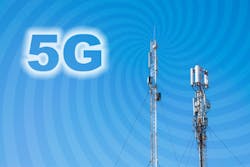IHS: Sales of intrusion control panels to the U.S. market set to decline
According to a new report from IHS Markit, shipments of intrusion alarm control panels sold to the U.S. market are expected to experience a compound annual decline of 4.9 percent from 2017 through 2022 due, in large part, to increased equipment replacements in advance of last year’s sunset of the 2G network across the country.
While advances in telecommunications technology have made intruder alarm systems more versatile by increasing the speed and stability of communications between sensors, control panels and monitoring centers, Anna Sliwon, Analyst for IHS Markit, said that adoption rates for the latest communications technologies in the industry has been slow. In fact, despite the fact that 4G connectivity has been available since 2009, Sliwon said that 4G communicators were not used frequently with intruder alarm systems until recently.
However, as more bandwidth intensive solutions like surveillance cameras are added to intrusion alarm systems, demands on alarm and signal transmission capacity will also grow and likely lead to opportunities for product and system innovations built around 5G technology, which holds the promise of much higher data transmission speeds and connection stability than today’s 4G networks.
The Role of 5G
In the world of Internet of Things (IoT) for both residential and commercial applications, Sliwon said that devices equipped with 5G-capable chipsets can offer superior battery life and much lower power consumption in wired systems. This functionality is crucial to reducing overall system maintenance costs, increasing their longevity and guaranteeing signal transmission stability that is far superior to existing technologies. In residential systems, for example, Sliwon said that the benefits of longer battery life and improved transmission capability could enable live video verification of intruder alarms on a wider scale. In commercial systems, 5G connectivity could support deployment of smart buildings that aim to improve the environmental footprint of commercial buildings, while delivering the benefits of automation.
Sliwon added that 5G could also accompany cloud technologies in enabling real interconnected environments and leverage big data. While the cloud has enabled the processing of large data sets from a variety of building and home systems, 5G could greatly speed up the transmission between systems, while improving connection stability. These benefits are particularly important to high-security applications where the costs of unsent or delayed signals could be very high.
Too Early to Tell?
5G is still at a very early adoption and deployment stage. In addition, Sliwon said that current global coverage of the 4G network is not universal, as certain countries only have partial coverage. This lack of 4G coverage reduces the popularity of this frequency for alarm communication, since the service offered by 5G-ready equipment may not work.
Significantly higher deployment costs on a national level may lead to postponement of country-wide rollouts, which will make investment in 5G technologies for intrusion systems riskier for manufacturers that do not prioritize 5G in their home markets. International markets may instead offer an opportunity.
5G technology is only beginning to roll out in certain countries, and its full potential has yet to be realized. Sliwon said any IoT device or a security system equipped with 5G-capable chipsets will also likely see a steep price increase before the technology can become mainstream, like 3G and 4G. For end-users to accept a significant price increase, the comparable functionalities offered by these systems would have to be significantly higher than those currently offered. In the residential sector, these offerings might only resonate with more savvy users of intruder alarm – primarily those who are interested in advanced ultra-smart home security systems. In commercial systems, 5G benefits may be more readily realized in smart buildings that integrate intruder alarm systems with other building systems, or with high-security applications.
5G provides a more capable alternative to 3G and 4G communication paths, particularly for feature-rich systems that integrate video devices. Higher resolution cameras require better bandwidth, before they can send sizeable images through the network. However, transfer of large amounts of data through cellular networks is likely to result in higher data costs to system owners.
The volume of data transferred through 5G networks will be enormous, which has strengthened existing concerns about the cybersecurity of big data and the potential for misuse or breaches.
Opportunity Versus Need
According to IHS, 5G could be the technology that offers the best of all available communication technologies to the security industry. However, the regulations covering intrusion systems in many countries require dual-path communication for ultimate confidence in a system’s ability to send out alerts of intrusion. In other systems, IP communication has already met the demand for alternatives to cellular technologies. The ultimate test for 5G in intruder alarm systems, according to Sliwon, will be around the question of whether 5G is necessary to accomplish what modern and future intruder alarm systems are capable of. However, embracing the opportunity for innovation, which 5G can offer, could help make future intrusion systems more efficient and capable.
For more information about the report, “Intruder Alarms & Monitoring Services Database – 2018,” click here. To learn more about the opportunities and challenges presented by 5G to the security industry, read the October 2018 cover story of Security Dealer & Integrator magazine.
